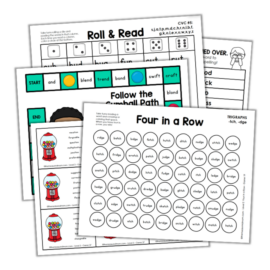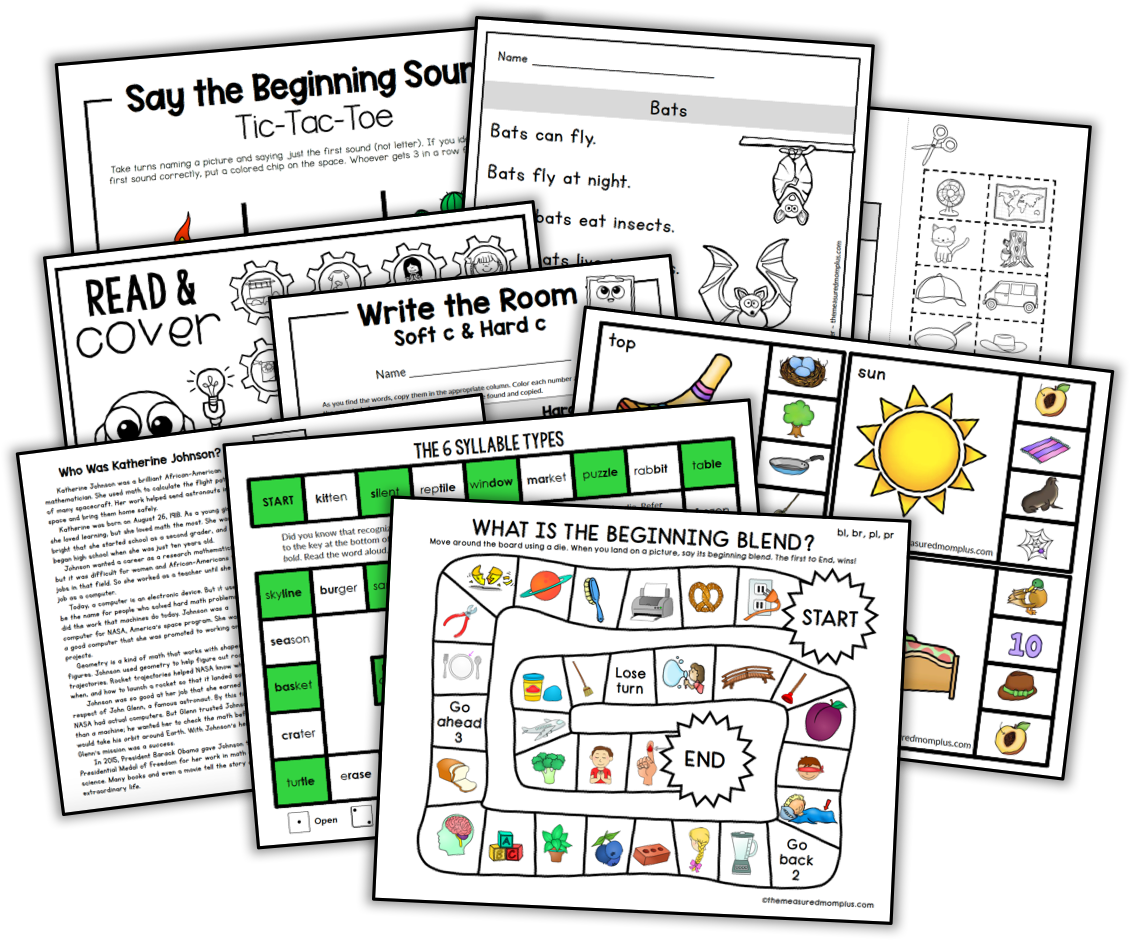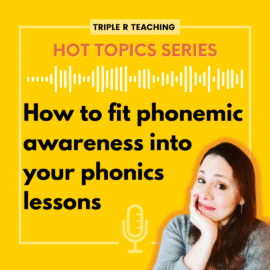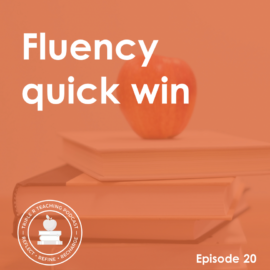
TRT Podcast #13: Science of reading-aligned literacy centers
You need to keep your students engaged while you teach small groups. But how? What literacy centers are best for a science of reading classroom? We’ve got you covered with five simple center ideas.
Full episode transcript
Today we're talking science-of-reading-aligned literacy center ideas.
I know that when you teach small group differentiated phonics lessons, you need literacy centers that the rest of your students can do independently, and you want to make sure these are powerful centers, right? Not just busy work, because especially if you're teaching all those small groups yourself, your students are going to spend a lot of time at centers.
I'm sure you know that planning and preparing literacy centers will take a great deal of time, but it doesn't have to! You can save yourself a ton of time by making the centers the same general theme and just switching out activities week to week.
Here are the centers that I recommend, a phonics center (and you could have more than one of those), fluency, independent reading, buddy reading, and listening to reading.
Let's start with those phonics centers. As for what to do at those, you put games and activities that follow the same general format, so your students don't have to learn a new game each week. And you make sure that whatever it is your students are practicing, it's a skill that they've learned previously; it's not a brand new skill. Review is so crucially important and centers are a great place to put it.
In my Mega Bundle of Phonics Centers, I have four different games: Roll & Read, Four-in-a-Row, Buddy Spelling, and Follow the Path. There's a game for every single phonics concept and they follow the same format every time. I'll leave a link to a free set of those in the show notes where you can get 12 of the games for free so you can try them out and see if it's something that will work for you.
Fluency centers could be a variety of things: high frequency word games, repeated reading, timed reading. They could see how long it takes them to read a passage and read it again later in the week to see if they can beat their time.
Then you've got the independent reading center. I recommend having each child have a gallon-size plastic bag with their name on it and fill it with the books you've read with them in shared reading and during their phonics lessons, decodable books. As they get further along and move out of decodables, which for many kids could be later in first grade, others not until second grade, then you start including other books that they can read independently. Some teachers also allow their students to have an extra book or two that maybe they can't read independently, but they just want to have it in their bag to enjoy. You can call that a "dessert book;" it's a book where maybe they just want to enjoy the pictures.
Then we've got the buddy reading center. We know from research that repeated reading improves fluency for students of all levels, especially when they receive feedback, which doesn't have to be from a teacher, it can be from a peer. When you teach your students how to listen to each other read and give proper feedback, this is a powerful time. Your students can do reader's theater, they could read decodable texts together, poems, partner plays, etc.
The fifth center I recommend is listening to reading. They could have a book on the iPad and they listen with headphones. If possible, just have the audio and they listen by following along in their book, a physical copy of the book, not a book on a screen.
So those are the five centers that I recommend, but some teachers also have a writing center and a technology center.
The writing center would be a place perhaps where they could practice handwriting or practice finishing sentences. Personally, I recommend this being a structured center and not a free-for-all with just paper and pencils where you call it a writing center. I would make sure they're actually practicing something that's going to be checked later so they can get feedback on their writing and that they'll actually improve. Otherwise, it just can be kind of a mess.
As for that technology center, there are many, many apps and things that could help students practice phonics skills.
One thing to keep in mind at those centers is, again, that your students can do them all by themselves without help from you. You'll want to show which centers are for which students, so if you have your differentiated small group phonics lessons, and you've got a group of students working on multi-syllable words, and a group of students working on CVCE, you're going to have different activities for them at the center. I recommend using colored folders so if you call one group your green group, then at the center, they have green file folders that have their center activities inside. It just makes it very quick and easy for them to see what activities are for them.
And the final reminder, don't use centers to TEACH reading. They are used to review and reinforce what has already been taught, and they are used next to explicit instruction in those small groups.
You can find a transcript for this podcast episode, as well as links to some things that I mentioned in the show notes, at themeasuredmom.com/episode13. Talk to you next time!
Sign up to receive email updates
Enter your name and email address below and I'll send you periodic updates about the podcast.
Get a free sample of our phonics centers below!








Rum Tan
The podcast with the transcript you shared here is really helpful and will give teachers innovative ideas. The strategies you shared here are very helpful to teach students reading. I found that many schools just teach phonics with the alphabet for up to a long time and different blend sound also. Kids in such schools learn reading in a very smooth way and kids enjoy also while learning. If kids learn to read in such a playful manner that it also boosts their confidence. Thanks for such a beneficial post.
Anjali
Very helpful post.
Jennifer Wilson
I’ve been a reading specialist for 19 years and even though I’ve heard and read about much of what you are presenting, it is always good to be refreshed. I love how you make teaching reading fun and seem easier than it really is.
Anna Geiger
Thank you so much, Jennifer – your feedback means a lot! I’m so glad you’re enjoying the podcast. 🙂
Allison Lawrence
Thank you so much! I love the way you present the information! It’s simple and understandable. Teaching reading is quite a difficult task.
Anna G
Thanks so much for your feedback, Allison! :))
Anupreksha
Hi…this is great . Can you suggest on building spelling too.
Anna G
I’ll keep that in mind for the future!
Lezel Tibor Miranda
Thank you for this helpful teaching strategies. It makes my teaching more interesting.
Megan
Thankbyou! Love the encouragement!